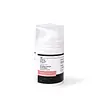What's inside
What's inside
 Key Ingredients
Key Ingredients

 Benefits
Benefits

 Concerns
Concerns

 Ingredients Side-by-side
Ingredients Side-by-side

Water
Skin ConditioningPolymethyl Methacrylate
Butyl Methoxydibenzoylmethane
UV AbsorberEthylhexyl Triazone
UV AbsorberButylene Glycol
HumectantEthylhexyl Methoxycinnamate
UV AbsorberEthylhexyl Salicylate
UV AbsorberPropanediol
SolventOctocrylene
UV AbsorberBis-Ethylhexyloxyphenol Methoxyphenyl Triazine
Skin ConditioningDMDM Hydantoin
PreservativeDibutyl Lauroyl Glutamide
Skin ConditioningMenthyl Lactate
MaskingPPG-26-Buteth-26
Skin ConditioningPEG-40 Hydrogenated Castor Oil
EmulsifyingDibutyl Ethylhexanoyl Glutamide
Skin ConditioningAcrylates/C10-30 Alkyl Acrylate Crosspolymer
Emulsion StabilisingSodium Stearoyl Glutamate
CleansingTriethanolamine
BufferingCI 26100
Cosmetic ColorantSclerotium Gum
Emulsion StabilisingXanthan Gum
EmulsifyingWater, Polymethyl Methacrylate, Butyl Methoxydibenzoylmethane, Ethylhexyl Triazone, Butylene Glycol, Ethylhexyl Methoxycinnamate, Ethylhexyl Salicylate, Propanediol, Octocrylene, Bis-Ethylhexyloxyphenol Methoxyphenyl Triazine, DMDM Hydantoin, Dibutyl Lauroyl Glutamide, Menthyl Lactate, PPG-26-Buteth-26, PEG-40 Hydrogenated Castor Oil, Dibutyl Ethylhexanoyl Glutamide, Acrylates/C10-30 Alkyl Acrylate Crosspolymer, Sodium Stearoyl Glutamate, Triethanolamine, CI 26100, Sclerotium Gum, Xanthan Gum
Water
Skin ConditioningCyclopentasiloxane
EmollientEthylhexyl Salicylate
UV AbsorberNiacinamide
SmoothingSilica
AbrasiveButyl Methoxydibenzoylmethane
UV AbsorberOctocrylene
UV AbsorberButylene Glycol
HumectantGlycerin
HumectantHomosalate
Skin ConditioningTapioca Starch
Neopentyl Glycol Diheptanoate
EmollientAmps/Hema Crosspolymer
C13-15 Alkane
SolventCoco-Glucoside
CleansingOctyldodecanol
EmollientPolysorbate 20
EmulsifyingZinc Oxide
Cosmetic ColorantTitanium Dioxide
Cosmetic ColorantAvena Sativa Kernel Extract
AbrasiveZinc PCA
HumectantSorbitan Olivate
EmulsifyingCeramide AP
Skin ConditioningCeramide NP
Skin ConditioningCeramide Eos
Skin ConditioningPanthenol
Skin ConditioningCentella Asiatica Extract
CleansingEthylhexylglycerin
Skin ConditioningPhenoxyethanol
PreservativeXanthan Gum
EmulsifyingTocopheryl Acetate
AntioxidantHyaluronic Acid
HumectantCitric Acid
BufferingWater, Cyclopentasiloxane, Ethylhexyl Salicylate, Niacinamide, Silica, Butyl Methoxydibenzoylmethane, Octocrylene, Butylene Glycol, Glycerin, Homosalate, Tapioca Starch, Neopentyl Glycol Diheptanoate, Amps/Hema Crosspolymer, C13-15 Alkane, Coco-Glucoside, Octyldodecanol, Polysorbate 20, Zinc Oxide, Titanium Dioxide, Avena Sativa Kernel Extract, Zinc PCA, Sorbitan Olivate, Ceramide AP, Ceramide NP, Ceramide Eos, Panthenol, Centella Asiatica Extract, Ethylhexylglycerin, Phenoxyethanol, Xanthan Gum, Tocopheryl Acetate, Hyaluronic Acid, Citric Acid
Ingredients Explained
These ingredients are found in both products.
Ingredients higher up in an ingredient list are typically present in a larger amount.
Also known as Avobenzone, this ingredient is a chemical sunscreen filter that provides protection in the UV-A range.
Avobenzone is globally approved and is the most commonly used UV-A filter in the world.
Studies have found that avobenzone becomes ineffective when exposed to UV light (it is not photostable; meaning that it breaks down in sunlight). Because of this, formulations that include avobenzone will usually contain stabilizers such as octocrylene.
However, some modern formulations (looking at you, EU!) are able to stabilize avobenzone by coating the molecules.
Avobenzone does not protect against the UV-B range, so it's important to check that the sunscreen you're using contains other UV filters that do!
The highest concentration of avobenzone permitted is 3% in the US, and 5% in the EU.
Learn more about Butyl MethoxydibenzoylmethaneButylene Glycol (or BG) is used within cosmetic products for a few different reasons:
Overall, Butylene Glycol is a safe and well-rounded ingredient that works well with other ingredients.
Though this ingredient works well with most skin types, some people with sensitive skin may experience a reaction such as allergic rashes, closed comedones, or itchiness.
Learn more about Butylene GlycolEthylhexyl Salicylate is an organic compound used to block UV rays. It primarily absorbs UVB rays but offers a small amount of UVA protection as well.
Commonly found in sunscreens, Ethylhexyl Salicylate is created from salicylic acid and 2-ethylhexanol. You might know salicylic acid as the effective acne fighter ingredient and BHA.
The ethylhexanol in this ingredient is a fatty alcohol and helps hydrate your skin, similar to oils. It is an emollient, which means it traps moisture into the skin.
According to manufacturers, Ethylhexyl Salicylate absorbs UV wavelength of 295-315 nm, with a peak absorption at 307-310 nm. UVA rays are linked to long term skin damage, such as hyperpigmentation. UVB rays emit more energy and are capable of damaging our DNA. UVB rays cause sunburn.
Learn more about Ethylhexyl SalicylateOctocrylene protects skin from sun damage. It absorbs UV-B with peak absorption of 304 nm. It is a common sunscreen ingredient and often paired with avobenzone, a UVA filter. This is because octocrylene stabilizes other sunscreen ingredients by protecting them from degradation when exposed to sunlight. Octocrylene is a photostable ingredient and loses about 10% of SPF in 95 minutes.
Octocrylene also acts as an emollient, meaning it helps skin retain moisture and softens skin. It is oil-soluble and hydrophobic, enhancing water-resistant properties in a product.
Those who are using ketoprofen, a topical anti-inflammatory drug, may experience an allergic reaction when using octocrylene. It is best to speak with a healthcare professional about using sunscreens with octocrylene.
The EU allows a maximum of these concentrations:
Learn more about OctocryleneWater. It's the most common cosmetic ingredient of all. You'll usually see it at the top of ingredient lists, meaning that it makes up the largest part of the product.
So why is it so popular? Water most often acts as a solvent - this means that it helps dissolve other ingredients into the formulation.
You'll also recognize water as that liquid we all need to stay alive. If you see this, drink a glass of water. Stay hydrated!
Learn more about WaterXanthan gum is used as a stabilizer and thickener within cosmetic products. It helps give products a sticky, thick feeling - preventing them from being too runny.
On the technical side of things, xanthan gum is a polysaccharide - a combination consisting of multiple sugar molecules bonded together.
Xanthan gum is a pretty common and great ingredient. It is a natural, non-toxic, non-irritating ingredient that is also commonly used in food products.
Learn more about Xanthan Gum